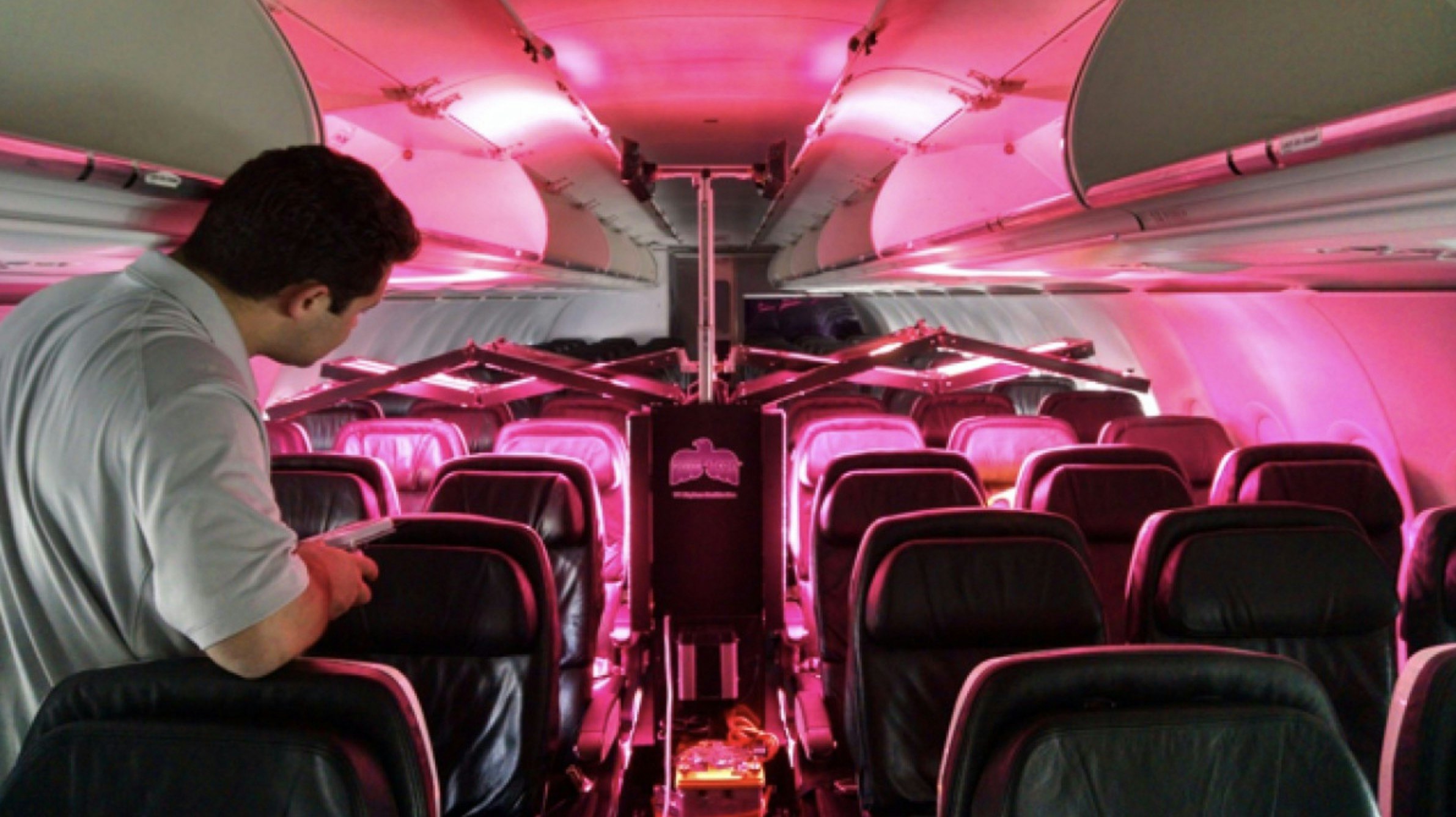This weird machine could disinfect planes — and even kill the coronavirus

Feb 7, 2020 • 2 min read

The pictures of evacuation flights as countries bring their citizens home during the coronavirus pandemic have been incredible, with hazmat-suited crew, medical staff and some passengers even flying in windowless converted freighter aircraft with seats bolted to the floor, for easier disinfection from COVID-19.

But how do you disinfect a normal plane? If you’re not Naomi Campbell and don’t travel with a pack of disinfectant wipes, you might be surprised at just how gross the surfaces get, even without the threat of a new respiratory illness to concentrate your mind on making sure you wash your hands properly. Even worse, it seems that nobody’s really sure how long coronaviruses — like the common cold, or SARS, MERS and now the novel coronavirus - stay alive on the kind of surfaces we see in planes.
“The new virus is a member of the coronavirus family, known to survive on surfaces for up to 28 days — especially in low-humidity environments like commercial airplanes,” argues Dimer, a company that makes an oddly-shaped robot called Germfalcon that uses ultraviolet light to disinfect airline cabins.
In essence, the Germfalcon looks like a tall airline meal trolley with arms that extend out, emitting ultraviolet-C light to kill viruses and bacteria. UVC is used in hospitals and other healthcare settings to disinfect water, air and surfaces, and the Germfalcon uses the same technology as it gets pushed up and down the aisles, galley kitchens and other spaces.
I’ve had a go with it at one of the big airline trade show where new tech like this is shown: it’s really easy to use, but it hasn’t taken off, so to speak.
Here’s the thing: it’s really quite hard to disinfect an aircraft, especially one with fabric seats. Even the wipe-clean leather seats that we see more and more of these days are hard to disinfect, because there are all sorts of pockets and crevices, often where us passengers are sticking our grubby fingers the most. It doesn’t help that one of the key pressures airlines have is to keep their planes on the ground as little as possible and in the air as much as possible, reducing the time that’s available for them to be cleaned and disinfected. And regulator standards aren’t as high as you might think, although extra cleaning does take place during times of concern like this.
In normal times, for a low-cost carrier —and even for some of the airlines that advertise them as “full service” — it’s not rare for any kind of cleaning or disinfection during the day to be restricted to simply picking up rubbish and wiping up any obvious sticky messes in the twenty or thirty minutes between flights.



